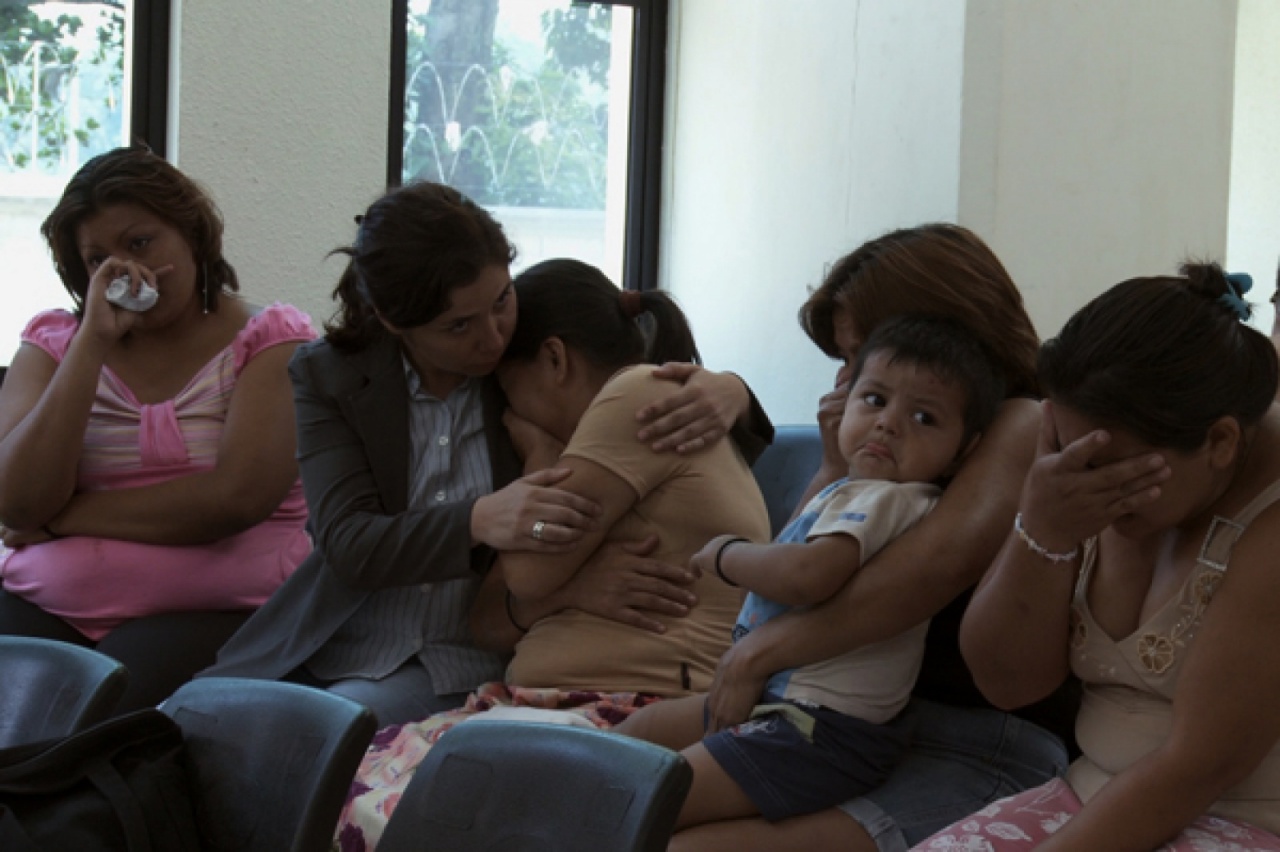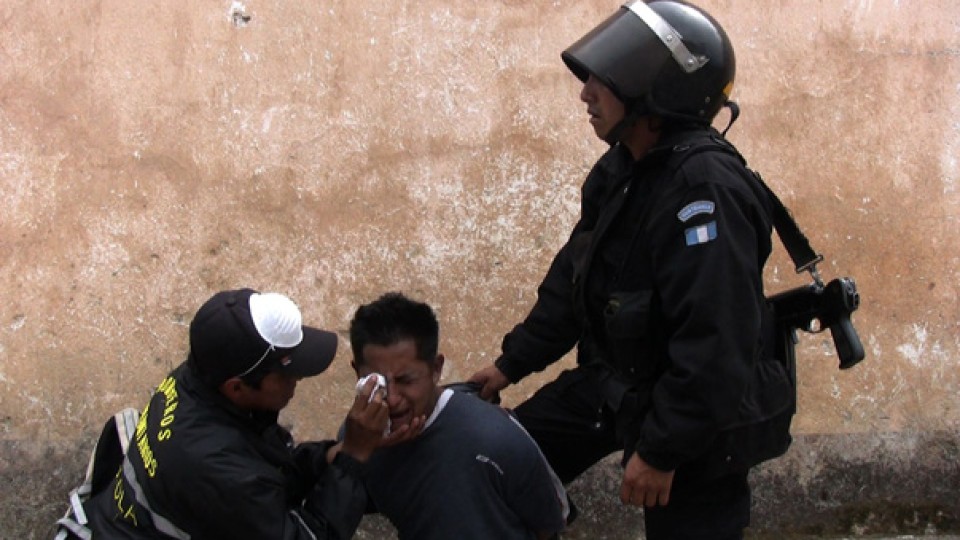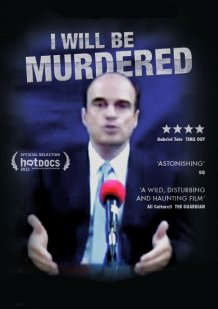Director: Fritz Ofner
Watch Evolution of Violence on FilmDoo
Evolution of Violence is not a film for the squeamish or faint-hearted. It is a brutal insight into Guatemala’s ‘strong culture of death’ even in the post-war era. In fact, the documentary tells us that the death toll is higher now than it ever was during armed conflict. One interviewee, a woman assisting victims’ families with their Public Ministry cases, argues that the rule of law is rejected as ‘the same people that were torturers are now in public office’.
It is shocking to say the least. Shots of dead bodies, scenes of traumatised families identifying their loved ones, and first-hand descriptions of brutal acts of violence all make the film particularly gruesome. However, one of its key messages is that the stark violence has somehow normalised these images in Guatemala. On the TV news there are reports about that weekend’s murders. This is highlighted when a judge appears to be falling asleep at a murder hearing. Violent deaths have become so regular in Guatemala that a funeral director attends crime scenes with a brochure of his coffins to sell to the victims’ families.

Many of the film’s interviewees blame North America for the country’s violence, arguing that their exploitation of Guatemalan agricultural products and oil reserves has repressed the population for years, leading to justified rebellions. In 1954 the CIA carried out a coup d’état in which the democratically elected Jacobo Árbenz was replaced by the US-backed dictator Carlos Castillo Armas. Unsurprisingly, this film documents the resentment of many Guatemalan people towards the United States.
The accounts of interviewees that have lost loved ones to the violence and those that are sympathetic to their struggle encourage us to demonise the perpetrators entirely. However, one particularly powerful account comes from one of the perpetrators. An otherwise seemingly ‘normal’ man describes one almost unbelievably gruesome act of violence in which he cut out a man’s still-beating heart. He describes how in return for committing acts like these, his Lieutenant would give them the so-called ‘gift’ of a 15 or 16-year-old girl to rape.

The film’s style is unusual. It is based principally around interviews and is cut with various old films, such as an American one about the banana trade. The lack of narration is refreshing and the direct images and accounts certainly speak for themselves. The film is not necessarily enjoyable, nor is it likely intended to be. It is, however, a unique and powerful piece that is as upsetting as it is bizarre.
Watch Evolution of Violence on FilmDoo.








